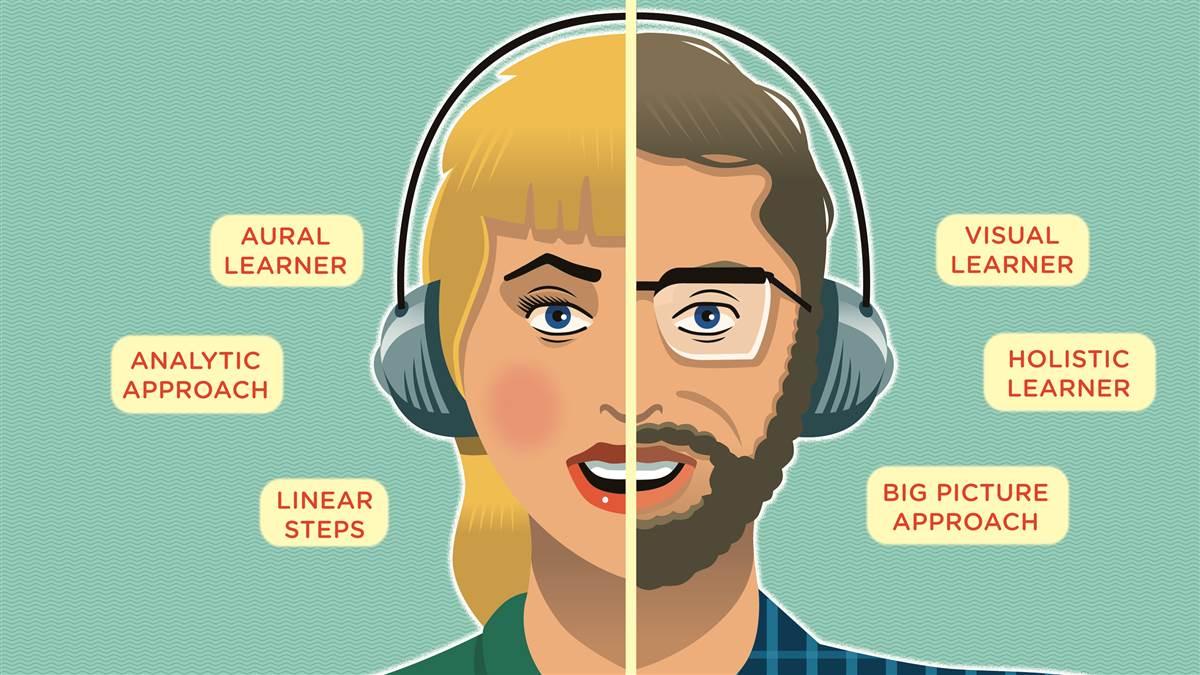Instructor Report: Learning styles
Advanced PILOT instructor report

Student B, on the other hand, can be a bit of a challenge. It’s clear he’s trying every bit as hard as student A. He reviews each lesson before arriving to the flight school, but once in the airplane he often doesn’t seem to connect the dots between what he has read and what he is doing. He needs you to demonstrate a task—sometimes several times. But his eye-hand coordination is excellent; he holds the promise of becoming a very good pilot.
What’s wrong with student B? Absolutely nothing. He simply has a different learning style than student A, and your job as a flight instructor is to recognize that difference, celebrate it, and craft your teaching style to help him be successful.
Just ask
In general, as many as 75 percent of people are visual learners, like our hypothetical student B. Visual learners habitually acquire information through sight. The next largest group is aural learners—the ones such as hypothetical student A, who can hear or read an instruction and then perform the task.
Then there are tactile learners—those who were constantly told “Don’t touch” as children. They excel at hands-on learning.
Start by simply asking questions. ‘How do you study? Do you like to read or would you rather watch a video?’Aviation writer Rod Machado recalled working with a student pilot who began his fourth flying lesson by putting his shoes into the backseat of the airplane. “Bare feet on metal gives me greater touch sensitivity to the rudder pedals,” the student said.
Initially Machado refused to let the student fly barefoot—until one day when he realized that the student had removed the soles from his shoes except for a lone strip under the arch. “From then on Marty was free to train without shoes—and became a better pilot because of it,” Machado said. The lesson here is that Marty tried to teach his instructor how to teach him, but “I wasn’t paying attention,” Machado said.
You could observe your student for hours to discern his learning style, but start by simply asking the question. If the student doesn’t know, you can ask follow-up questions. “How do you study? Do you like to read or would you rather watch a video?”
Your student may not know exactly what type of learning style he has, but he might know whether he is “left brain” or “right brain”—that is, whether his brain has a preferred side to use for understanding and storing information.
“While both sides of the brain are involved in nearly every human activity, it has been shown that those with right-brain dominance are characterized as being spatially oriented, creative, intuitive, and emotional. Those with left-brain dominance are more verbal, analytical, and objective,” according to the FAA’s Flight Instructor Handbook.
While these are generalizations, you could encounter people who use both sides of the brain equally well for understanding and storing information. But the dominant brain hemisphere at least gives you a guide for how to proceed. Thus, you’ll know that student A has an analytic approach to learning. She gains understanding in linear steps, with each step logically following the previous one. She needs well-defined, sequential steps where the overall picture is developed slowly, thoroughly, and logically. The Flight Instructor Handbookcharacterizes this as a “bottom-up strategy.” Student A might fixate on the instruments, but that’s something to work on. Besides, you know she’s going to be an outstanding instrument pilot.
Student B, a right-brain or “holistic” learner, is the big-picture person. “This is a top-down strategy and learners tend to learn in large jumps, absorbing material almost randomly without seeing connections, until suddenly ‘it’ clicks and they get it,” the Handbooksaid. “Global learners solve complex problems rapidly once they have grasped the big picture, but they often have difficulty explaining how they did it.”
While the dominant style of receiving information is the best way for a student to learn new information, flight training requires visual, aural, and tactile learning. “Flying is a perceptual motor skill,” CFI Jeff Falkner explained in the AOPA Air Safety Institute publication CFI Tips. “You need sight to observe inside and outside references, sound for engine and wind noise and radio communications, and touch to feel what the aircraft is doing.” Tactile learners may struggle with ground school, whose training systems are primarily sight and sound-based, Falkner said.
A good instructor knows that a one-size-fits-all teaching method isn’t appropriate. Make it a goal to decipher each student’s learning style, find a teaching method that aligns well with that style, and you’ll be rewarded many times over with the sunshine smile of a student who tells you, “I get it!”



